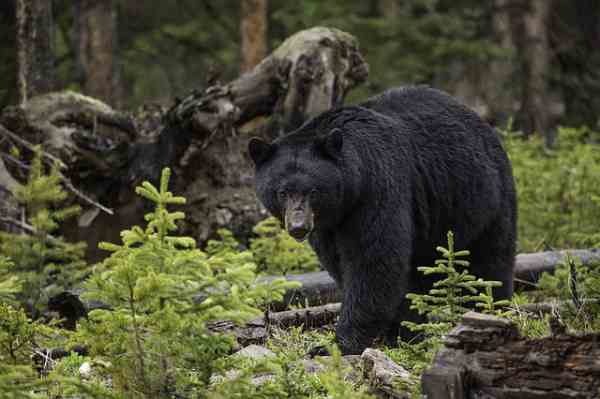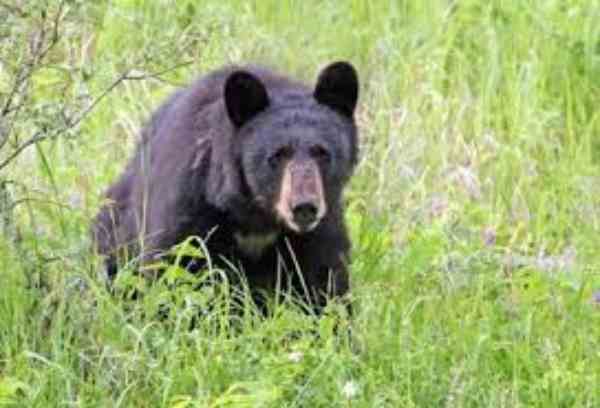Table of Contents
Washington state is home to a multitude of species, including bears. Although Washington may not be unanimously known as “Bear Country” as other parts of the US, it still has its fair share of Ursidae sightings! Black Bears make up the majority in Washington, with numbers increasing over recent years. Brown Bears also inhabit regions of the Cascades and North Cascades. As the human population in Washington continues to grow and encroach on the wild space that these bears need, it’s important to be aware of safety measures when venturing outdoors.

Are there Black bears in Washington state?
Yes, there are Black bears in Washington state. They can be found throughout the Cascade Range and Olympic Peninsula, making it one of the few states in the lower 48 to contain a healthy population of this species. Although humans often come into contact with them due to roads cutting through formerly wild spaces, experts urge people to not approach or feed these animals. Instead, keeping your distance and using appropriate wildlife management techniques helps promote a healthy balance between humans and Black bears that is mutually beneficial for both species.
Where are Black bears located in Washington state?
Black bears are native to Washington state and have become closely associated with the region. They can be found mainly in western Washington, as well as areas of the Cascade Mountains, Puget Lowlands, and coastal shores. Due to their adaptability and hardiness, black bears have been able to spread across different terrain throughout the state. In fact, some of the larger populations exist in more remote locations such as Okanogan Highlands and the high mountain area near the Canadian border.
Habitat
Black bears inhabit some of the most biodiverse forests in the state of Washington. From old-growth rainforests to shrubs and grasslands near the coasts, Black Bears make use of the wide range of resources found in their habitats. In addition to a thriving variety of vegetation such as wild berries, Black Bears also hunt small animals like squirrels and rodents as part of their diet. Given their preference for many different types of environments, they can be found in areas ranging from remote wilderness areas to cities.
Diet
They are opportunistic feeders and eat fruits, nuts, insects, honey and anything else that will provide them with sustenance. In the summer months, they prefer to consume plant foods such as berries or other sweet material whilst, during the winter, they tend to dine on carrion and small prey such as rodents or deer.

Colour
Black Bears in Washington State can come in a variety of colours, ranging from black to cinnamon, light browns and even tans. Though all are classified as “black bears”, their fur can vary greatly across the state. Contrary to what its name suggests, the majority of these bears actually have coats with various shades and hues. In terms of habitat preferences, they generally prefer woodlands, mountainous terrains and riparian areas which provide them with ample amounts of food and security.
Size, Lifespan and Weight
The average black bear will weigh between 150 to 600 pounds, or even more in some cases. In terms of length, an adult black bear can have a total standing size of 3 to 7 feet. Furthermore, black bears are long-lived species with a lifespan of approximately 15 – 25 years when living in the wild, and up to 30 years when in captivity.
Predators
Bears in Washington State have the occasional run-in with some of their more vicious predators, such as coyotes, bobcats and mountain lions. Fortunately for the bears, they are generally much larger than their predators and can often repel the attack. Still, if the predator sees an opportunity like a bear cub being left alone for even just a few minutes it might rush in to feed or carry away the smaller animal.
This is something all bear families should keep in mind when venturing into Washington state’s forests and mountain ranges; while they may never see any of these predators on their travels, they must still be aware that they could be nearby lurking in shadows or behind tall grasses.

Reproduction
Black bears are equipped with sophisticated reproductive strategies that have allowed the species to thrive, even in the face of intense competition for resources. Their mating period starts in mid-May, although different populations have slight variations in timing. During this time, female bears will mate with multiple males and store sperm from each mating until wintertime when she enters into a state of delayed implantation.
This means that although her body can hold onto multiple sets of sperm at once, it won’t begin the process of producing cubs until later on in the year. A few months after entering hibernation, she’ll give birth to litters averaging two cubs (though litters can range between one and four). The mother bear will raise these cubs on her own over the winter before they venture out on their own come springtime.
How many bears are in Washington state?
Washington state is home to a variety of wildlife, including its own unique bear population. It is estimated that the state is home to about 35,000-40,000 black bears, making it one of the largest black bear populations in the United States.

Do black bears hibernate in Washington state?
Black bears in Washington state are well-known for their hibernation habits. Every winter, these creatures find a den and settle in for the cold season. Scientists have been studying these hibernating black bears on the coasts and in the Cascade Mountains to better understand their behaviours, as well as the effects of food availability and climate change on them.
When do you black bears come out of hibernation in Washington state?
In Washington state, black bear hibernation typically begins in late October and ends in early April. During this period, these majestic creatures will have retreated from human activity and found a secure place to hunker down for the winter months ahead.
Reference:
https://wdfw.wa.gov/species-habitats/species/ursus-americanus
https://wdfw.wa.gov/newsroom/wdfw-statement/update-chelan-county-black-bear-incident
A motivated philosophy graduate and student of wildlife conservation with a deep interest in human-wildlife relationships, including wildlife communication, environmental education, and conservation anthropology. Offers strong interpersonal, research, writing, and creativity skills.









